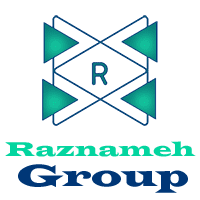In 2021, a boutique financial consultancy named FinAdvance doubled its client inquiries and achieved a 140% increase in revenue by implementing targeted SEO strategies. Within six months, the firm revamped its online presence, leading to significant growth and new business opportunities.
In today’s digital landscape, the competition among companies is fierce. With billions of websites vying for attention, it’s critical for companies to stand out online. SEO (Search Engine Optimization) is essential for being discovered by potential clients, partners, and stakeholders, providing a competitive edge by boosting online visibility.
Here’s why SEO is crucial for your company:
- Enhanced Discoverability: SEO helps your website and profiles rank higher in search engine results, making it easier for potential clients and industry professionals to find you.
- Increased Professionalism: A well-optimized online presence signals that you are serious about your career, giving you a competitive edge.
- More Opportunities: Higher visibility leads to more inquiries and collaboration opportunities, driving your business forward.
Overview
This article will guide you through the fundamentals of SEO, offering actionable insights and strategies tailored for companies. We will cover essential aspects like ;
- Understanding SEO Basics: Grasp the fundamentals of SEO and its importance for your company.
- Building Your Corporate Brand Online: Learn how to create a distinctive and memorable online identity.
- Keyword Research : Discover how to choose the right keywords to attract your target audience.
- Optimizing Your Corporate Website: Get practical tips to make your website SEO-friendly.
- Blogging for Corporate Visibility: Understand the role of blogging in improving your search rankings and engagement.
Understanding SEO
Definition: SEO (Search Engine Optimization) is the process of enhancing a website’s visibility and ranking on search engine results pages (SERPs) through non-paid (organic) search strategies. The goal is to attract more quality traffic, improve user experience, and increase conversion rates by making the website more accessible and relevant to users and search engines.
Key Components of SEO:
1. On-Page SEO:
On-page SEO focuses on optimizing the elements within the website that you control. This involves:
- Content Quality: Ensuring content is valuable, informative, and engaging to the target audience.
- Keyword Optimization: Using relevant keywords strategically in titles, headings, and throughout the content to match user search queries.
- Meta Tags: Crafting compelling meta titles and descriptions to improve click-through rates (CTR) from SERPs.
- Internal Linking: Connecting different pages on your website to distribute link equity and guide users through relevant content.
- URL Structure: Creating clean and descriptive URLs that reflect the page’s content.
A blog post on “Best Hiking Trails in Colorado” should use keywords like “hiking trails Colorado,” include rich content about each trail, have an engaging meta description, and link to related articles about hiking gear or safety tips.
2. Off-Page SEO:
Off-page SEO involves activities outside your website that impact its ranking, mainly through:
- Backlinks: Acquiring high-quality links from reputable websites to enhance your site’s authority and trustworthiness.
- Social Signals: Leveraging social media engagement (shares, likes, comments) to signal content popularity.
- Brand Mentions: Getting your brand mentioned across various platforms, even if not directly linked, helps build credibility.
If a popular travel blogger links to the “Best Hiking Trails in Colorado” article on your website, it can boost your authority in the outdoor niche and drive traffic from their audience.
3. Technical SEO:
Technical SEO ensures the website’s infrastructure is optimized for search engines. Key aspects include:
- Site Speed: Improving load times to enhance user experience and reduce bounce rates.
- Mobile Optimization: Ensuring the website is responsive and provides a good experience on mobile devices.
- Secure Connections (HTTPS): Using SSL certificates to secure the site, which is a ranking factor for Google.
- Crawlability: Making sure search engines can easily crawl and index your website by fixing broken links, using proper sitemaps, and avoiding duplicate content.
A website with fast load times and a mobile-friendly design will rank higher on mobile search results, leading to better user retention and higher rankings.
Glossier Company
Company Background: Glossier, a beauty brand founded in 2014, has leveraged SEO as a crucial part of its digital strategy to grow its business significantly over the past five years.
How Glossier Uses SEO:
- Content-Driven Approach:
- On-Page SEO: Glossier focuses on creating high-quality content through its blog “Into The Gloss,” which covers beauty tips, product reviews, and skincare routines. They use relevant keywords to attract users interested in beauty advice, making their content highly searchable.
- Internal Linking: The blog strategically links to Glossier’s product pages, increasing traffic to their e-commerce site.
- Building Authority:
- Off-Page SEO: Glossier has cultivated relationships with influencers and beauty bloggers who review and link to their products. These backlinks from authoritative beauty sites boost Glossier’s SEO by improving its domain authority.
- Social Media Signals: Their active presence on social media platforms drives engagement and indirectly supports their SEO efforts by increasing brand visibility and traffic.
- Technical Excellence:
- Site Speed & Mobile Optimization: Glossier’s website is optimized for quick loading and provides a seamless shopping experience on mobile devices. This not only enhances user satisfaction but also meets Google’s ranking criteria for mobile-first indexing.
- Secure Connections: The website uses HTTPS, which is essential for maintaining user trust and improving rankings.
By effectively leveraging these SEO strategies, Glossier has achieved high organic search rankings for many of its beauty-related keywords. This visibility has led to increased traffic, higher conversion rates, and significant growth in online sales. Their strategic SEO implementation has played a pivotal role in establishing Glossier as a leading brand in the competitive beauty industry.
Building Your Corporate Brand Online
1. Personal Branding for Companies: Personal branding for companies is about creating a unique and identifiable corporate identity online. This involves:
- Consistent Brand Voice: Establishing a tone that reflects the company’s values and resonates with the target audience.
- Distinct Aesthetic: Crafting a recognizable visual style, including logos, colors, and design elements.
- Unified Messaging: Ensuring all communications reflect the company’s mission, values, and unique selling propositions (USPs).
Key Elements:
- Website Design: Creating an appealing, user-friendly website that embodies the company’s brand.
- Social Media Presence: Maintaining consistent branding across social media platforms to engage with the audience.
- Content Strategy: Developing valuable content that aligns with the brand’s voice and meets the needs of the audience.
2. SEO and Branding: SEO (Search Engine Optimization) plays a crucial role in enhancing a company’s brand online by:
- Improving Visibility: Optimizing the website and content to appear prominently in search engine results for relevant keywords.
- Driving Traffic: Increasing the number of visitors to the site through higher search rankings.
- Building Credibility: A strong online presence, supported by effective SEO, helps establish the company as a trustworthy and authoritative source in its industry.
Key Takeaways:
- Develop a Consistent Brand Identity: Establish a brand voice, aesthetic, and messaging that reflect your company’s values and appeal to your target audience.
- Leverage SEO to Enhance Visibility: Use SEO to improve your search rankings, making it easier for customers to discover your brand.
- Create Valuable Content: Produce high-quality, relevant content that meets the needs of your audience and aligns with your branding.
- Maintain Technical Excellence: Ensure your website is optimized for performance, security, and mobile usability to meet search engine standards and provide a good user experience.
Building a corporate brand online requires a strategic combination of personal branding and effective SEO. Companies like HubSpot illustrate how aligning these elements can significantly enhance online presence, credibility, and customer engagement. By focusing on consistent branding and leveraging SEO, businesses can achieve greater visibility, attract more qualified traffic, and drive sustained growth.
Keyword Research
1. What Are Keywords?
Keywords are specific terms or phrases that users type into search engines when looking for information, products, or services. For businesses, keywords serve as a bridge to connect your content with what potential customers are searching for. By incorporating relevant keywords into your content, you enhance your website’s visibility in search engine results pages (SERPs), attract targeted traffic, and align with user search intent.
Importance:
- Relevance: Keywords help you understand what your audience is searching for, enabling you to create content that meets their needs.
- Visibility: Using the right keywords increases the likelihood that your content will appear in search results, boosting your online presence.
- Engagement: Relevant keywords attract the right audience, leading to higher engagement, lower bounce rates, and better conversion rates.
2. Finding the Right Keywords: Identifying the right keywords involves research and analysis to ensure they align with your business goals and target audience. Here’s how to find them:
- Use Keyword Research Tools:
- Google Keyword Planner: Provides keyword ideas and search volume data based on actual Google searches. Ideal for finding keywords that have a high search volume and low competition.
- Ahrefs: Offers comprehensive keyword data, including search volume, keyword difficulty, and click-through rates (CTR). It also provides insights into competitors’ keywords.
- Ubersuggest: Generates keyword ideas and provides data on search volume, SEO difficulty, and cost-per-click (CPC). Useful for identifying long-tail keywords and content opportunities.
- Analyze Competitors:
- Identify Competitors: Find your top competitors in search results for your main products or services.
- Analyze Their Keywords: Use tools like Ahrefs or SEMrush to see which keywords your competitors rank for and consider targeting those that align with your business.
- Understand User Intent:
- Search Queries: Look at the questions or problems your target audience is searching to solve.
- Content Matching: Ensure your content answers these queries effectively, aligning with informational, navigational, or transactional search intent.
3. Types of Keywords:
- Short-tail Keywords:
- Definition: Broad, generic terms usually consisting of one or two words.
- Examples: “software solutions,” “digital marketing.”
- Characteristics: High search volume, broad intent, high competition.
- Usage: Best for driving general awareness but may attract a diverse audience with varying intent.
- Long-tail Keywords:
- Definition: More specific phrases, often consisting of three or more words.
- Examples: “cloud-based software solutions for small businesses,” “best digital marketing strategies for startups.”
- Characteristics: Lower search volume, specific intent, lower competition.
- Usage: Ideal for targeting niche audiences with clearer intent, leading to higher conversion rates.
Let’s say you’re a company specializing in eco-friendly packaging solutions. Here’s how you would approach keyword research:
- Brainstorm Initial Keywords:
- Start with broad terms related to your industry, such as “sustainable packaging,” “eco-friendly packaging solutions.”
- Use Keyword Research Tools:
- Google Keyword Planner: Discover related keywords like “biodegradable packaging” or “compostable packaging for food.”
- Ahrefs: Find long-tail keywords such as “affordable biodegradable packaging for small businesses.”
- Analyze Competitors:
- Identify Competitors: Look at companies like Packhelp or EcoEnclose.
- Analyze Keywords: Use tools to find that they rank for “custom sustainable packaging” and “recyclable shipping boxes.”
- Understand User Intent:
- Search Queries: Note queries like “where to buy compostable packaging” or “how eco-friendly packaging helps reduce waste.”
- Content Matching: Create content addressing these queries, such as blog posts on the benefits of compostable packaging or guides on choosing the right eco-friendly materials.
The Success of Everlane
Company Background: Everlane, a popular clothing retailer, emphasizes ethical manufacturing and sustainability. They have effectively used keyword research to attract customers who value these principles.
How Everlane Uses Keywords:
- Short-tail Keywords:
- Keywords Used: “ethical clothing,” “sustainable fashion.”
- Application: These broad terms help Everlane attract a wide audience interested in sustainable clothing options.
- Long-tail Keywords:
- Keywords Used: “affordable ethical clothing brands,” “where to buy sustainable jeans.”
- Application: These specific phrases attract customers who are ready to purchase and are looking for specific solutions, leading to higher conversion rates.
- SEO Strategy:
- Content Creation: Everlane’s blog and product pages are optimized for both short-tail and long-tail keywords. They provide detailed information about their manufacturing processes and material sources, aligning with search intent for users interested in ethical fashion.
- Competitor Analysis: They monitor keywords used by competitors like Patagonia and Reformation, adjusting their content strategy to cover similar and related topics.
Key Takeaways:
- Identify Relevant Keywords: Use research tools to find keywords that match your business offerings and target audience.
- Analyze Competitors: Look at the keywords your competitors are using to find opportunities and gaps.
- Understand User Intent: Align your content with the specific needs and queries of your audience.
- Balance Keyword Types: Use a mix of short-tail and long-tail keywords to cover broad and specific search intents.
Effective keyword research is essential for enhancing a company’s online visibility and connecting with potential customers. By understanding what keywords are, finding the right ones through tools and analysis, and differentiating between short-tail and long-tail keywords, businesses can create targeted content that meets user search intent and drives meaningful traffic to their website. Companies like Everlane demonstrate how leveraging keyword research can attract a specific audience and support sustainable growth through improved search engine rankings and user engagement.
Optimizing Your Corporate Website
1. Website Essentials:
A well-optimized corporate website is crucial for effective SEO. The goal is to create a site that is both appealing to visitors and search engines. Key elements include:
- Clean Design: Ensure your website has a professional and visually appealing design. A clutter-free layout with intuitive navigation helps visitors find information easily, improving user experience and reducing bounce rates.
- High-Quality Content: Your content should be valuable, relevant, and engaging. It should address the needs and interests of your audience, encouraging them to stay longer and explore further.
- User-Friendly Navigation: Implement a logical and straightforward navigation structure. This includes clear menus, internal linking, and a search feature, making it easy for visitors to find what they’re looking for.
2. On-Page SEO Techniques:
On-page SEO focuses on optimizing individual pages to rank higher and earn more relevant traffic from search engines. Key techniques include:
- Title Tags:
- What: Title tags are the clickable headlines that appear in search results.
- How: Create descriptive and concise titles for each page. Include relevant keywords near the beginning, and keep the length under 60 characters to avoid truncation in SERPs.
- For a software company, a title like “Innovative Cloud-Based Solutions for Small Businesses | [Company Name]” clearly describes the content and includes keywords.
- Meta Descriptions:
- What: Meta descriptions are brief summaries that appear below the title tags in search results.
- How: Write compelling meta descriptions (up to 160 characters) that incorporate target keywords. Aim to provide a clear and enticing summary of what the page offers to improve click-through rates.
- “Explore our range of cloud-based software solutions designed for small businesses. Boost productivity with scalable tools from [Company Name].”
- Headers:
- What: Header tags (H1, H2, H3, etc.) are used to structure content and provide hierarchy.
- How: Use the H1 tag for the main page title, and H2, H3 tags for subheadings. Incorporate keywords naturally to improve readability and SEO.
- An H1 for a blog post might be “The Ultimate Guide to Cloud-Based Software,” with H2s like “Benefits of Cloud Solutions” and “Top Providers in 2024.”
- Content:
- What: Website content includes all text, images, videos, and other multimedia on your site.
- How: Ensure content is informative, engaging, and optimized for chosen keywords. Use natural language, provide value to the reader, and avoid keyword stuffing.
- A page on cloud solutions might include a detailed explanation of benefits, case studies, and comparisons with traditional software, using keywords like “cloud-based software” and “scalable solutions.”
3. Visual Content SEO:
Visual content enhances user experience and can significantly contribute to SEO when optimized correctly. Key aspects include:
- Alt Text:
- What: Alt text (alternative text) describes images for those using screen readers and helps search engines understand the content.
- How: Write descriptive and keyword-rich alt text for all images. This improves accessibility and helps images appear in search results.
- For an image of a software interface, alt text might be “Screenshot of [Company Name]’s cloud-based software dashboard for small businesses.”
- Video SEO:
- What: Video SEO involves optimizing video content to improve its visibility in search results.
- How: Optimize video titles, descriptions, and tags with relevant keywords. Provide transcripts for accessibility and indexability, and include a video sitemap.
- A video titled “How Our Cloud-Based Solutions Improve Business Efficiency” with a description like “Learn how [Company Name]’s cloud-based software solutions enhance productivity and streamline operations for small businesses.”
EcoCraft Optimizing a Corporate Website
Company Background: Imagine EcoCraft, a company specializing in sustainable office supplies. Here’s how they can optimize their website:
1. Website Essentials:
- Clean Design: EcoCraft’s website has a minimalist, eco-friendly design with easy-to-navigate menus and clear calls-to-action (CTAs).
- High-Quality Content: They provide detailed product descriptions, sustainability reports, and educational blogs about eco-friendly practices.
- User-Friendly Navigation: The website features well-organized categories, such as “Eco-Friendly Office Supplies” and “Sustainable Paper Products,” with an integrated search bar for quick access.
2. On-Page SEO Techniques:
- Title Tags: Pages are titled “Sustainable Office Supplies | EcoCraft” and “Eco-Friendly Paper Products | EcoCraft,” clearly reflecting content and keywords.
- Meta Descriptions: Descriptions like “Discover our range of eco-friendly office supplies, including recycled paper and biodegradable pens. Shop now at EcoCraft” encourage clicks.
- Headers: Product pages use headers like “Our Eco-Friendly Paper Selection” (H1) and “Why Choose Recycled Paper” (H2).
- Content: Content includes detailed descriptions, benefits of using eco-friendly products, and customer testimonials, naturally incorporating keywords like “sustainable office supplies” and “eco-friendly paper.”
3. Visual Content SEO:
- Alt Text: Images of products are described with alt text such as “Eco-friendly biodegradable pens in assorted colors” and “Recycled paper notebooks by EcoCraft.”
- Video SEO: Videos titled “How to Choose Sustainable Office Supplies” with descriptions like “Learn tips for selecting eco-friendly office supplies that reduce environmental impact.”
Key Takeaways:
- Design for User Experience: Ensure your website has a clean, professional design with easy navigation.
- Optimize On-Page Elements: Use title tags, meta descriptions, headers, and content effectively to align with SEO best practices.
- Enhance Visual Content: Use descriptive alt text for images and optimize video content to improve accessibility and visibility.
- Balance SEO with User Value: While optimizing for search engines, focus on providing real value to users through informative and engaging content.
Optimizing a corporate website involves a combination of well-designed user experience, strategic on-page SEO techniques, and effective visual content SEO. By focusing on these areas, companies like EcoCraft can enhance their online presence, improve search rankings, and drive meaningful traffic and conversions. Adopting a holistic approach to website optimization ensures that both users and search engines find your site valuable and engaging.
Blogging for Corporate Visibility
1. Why Blog?
Blogging is a powerful tool for enhancing your corporate website’s visibility and engaging with your target audience. Here’s why it’s essential:
- Fresh Content: Regularly adding new content through blogging signals to search engines that your site is active and updated. This can improve your rankings in search results.
- Thought Leadership: By sharing insights and expertise, your blog can position your company as a leader in your industry, building credibility and authority.
- Audience Engagement: Blogs attract and engage your target audience by addressing their interests and needs. This helps in building relationships and driving conversions.
2. Content Ideas:
Creating a variety of content types can keep your blog fresh and appealing. Here are some ideas:
- Industry Insights:
- What: Share your expertise on current trends, developments, and forecasts in your industry.
- Why: This establishes your company as knowledgeable and up-to-date, attracting readers who seek valuable insights.
- A software company might write about “The Future of Cloud Computing: Key Trends to Watch in 2024.”
- Company Updates:
- What: Announce new products, services, company milestones, or other significant news.
- Why: Keeps your audience informed about your company’s growth and innovations, fostering a sense of connection and transparency.
- “Introducing Our New Suite of Cloud-Based Productivity Tools for Small Businesses.”
- Customer Stories:
- What: Highlight case studies, testimonials, or success stories from your customers.
- Why: Provides social proof and builds trust by showcasing real-world applications and benefits of your products or services.
- “How XYZ Corp. Improved Their Operations with Our Cloud-Based Solutions: A Customer Success Story.”
3. SEO-Friendly Blogging:
To maximize the impact of your blog, follow these SEO best practices:
- Keyword Usage:
- What: Integrate relevant keywords naturally into your blog posts.
- How: Use primary keywords in the title, introduction, and throughout the content. Incorporate related keywords to cover broader search intent without keyword stuffing.
- If the keyword is “cloud-based software,” use it in the title and sprinkle related terms like “online tools” and “software-as-a-service” throughout the post.
- Internal Linking:
- What: Link to other relevant pages or blog posts on your site.
- How: Use internal links to guide readers to related content, improving site navigation and encouraging longer visits.
- In a blog about “Benefits of Cloud-Based Solutions,” link to another post on “How to Choose the Right Cloud Provider” or a product page about your cloud services.
- Content Structure:
- What: Organize your content with subheadings, bullet points, and short paragraphs.
- How: Use clear and descriptive subheadings (H2, H3) to break up content. Bullet points and short paragraphs enhance readability and make it easier for readers and search engines to understand your content.
- Use subheadings like “Top 5 Benefits of Cloud Solutions” and bullet points for lists such as “Cost savings, Scalability, Accessibility.”
GreenTech Solutions Blogging for Corporate Visibility
Company Background: Let’s consider GreenTech Solutions, a company specializing in eco-friendly technology products. Here’s how they can leverage blogging for visibility:
1. Why Blog:
- Fresh Content: GreenTech posts weekly blogs about innovations in eco-friendly tech, keeping their site updated and active.
- Thought Leadership: They share insights on sustainable technology trends, establishing themselves as experts in the field.
- Audience Engagement: Their blog attracts eco-conscious consumers and businesses, providing valuable information and driving engagement.
2. Content Ideas:
- Industry Insights:
- Blog Title: “How Green Technology Is Shaping the Future of Sustainable Business.”
- Content: Discuss emerging technologies in sustainability, potential impacts, and GreenTech’s role in these developments.
- Company Updates:
- Blog Title: “GreenTech Unveils Its Latest Energy-Efficient Devices at the 2024 EcoTech Expo.”
- Content: Announce new product launches and participation in industry events, highlighting innovations and benefits.
- Customer Stories:
- Blog Title: “Customer Spotlight: How GreenTech’s Solar Panels Transformed ABC Corp’s Energy Usage.”
- Content: Feature a detailed case study of a client who successfully implemented GreenTech’s solar panels, showcasing results and benefits.
3. SEO-Friendly Blogging:
- Keyword Usage:
- Target Keywords: “sustainable technology,” “energy-efficient devices.”
- Integration: Use keywords in titles like “Top 10 Sustainable Technology Trends” and throughout the content, ensuring they fit naturally within the text.
- Internal Linking:
- Link to related posts such as “Benefits of Energy-Efficient Devices” or product pages for their latest solar panels.
- Purpose: Helps readers navigate to relevant information, increasing time spent on the site and improving SEO.
- Content Structure:
- Subheadings: Use subheadings like “Why Choose Sustainable Technology” and “GreenTech’s Latest Innovations.”
- Bullet Points: Lists benefits of sustainable technology in bullet points for easy reading.
- Short Paragraphs: Keeps paragraphs concise to maintain reader interest and readability.
Key Takeaways:
- Publish Regularly: Consistent blogging adds fresh content, which is favored by search engines.
- Diversify Content: Use a variety of blog types to keep your audience engaged and informed.
- Optimize for SEO: Use keywords naturally, employ internal linking, and structure content for readability to enhance your blog’s visibility.
- Focus on Value: While optimizing for search engines, ensure your content provides real value to your audience.
Blogging is a crucial strategy for increasing corporate visibility online. By understanding the importance of blogging, exploring diverse content ideas, and applying SEO-friendly techniques, companies like GreenTech Solutions can enhance their online presence, establish authority in their industry, and engage effectively with their target audience. Effective blogging not only boosts search engine rankings but also drives traffic, builds credibility, and fosters relationships with potential customers.
Final Thoughts: Elevate Your Corporate Presence with Raznameh
In today’s digital-first business landscape, standing out is essential for corporate success. At Raznameh, we recognize the transformative power of a strong online presence in driving your company’s growth. By leveraging the principles of SEO, we empower businesses like yours to enhance visibility, attract the right opportunities, and achieve new levels of success.
Imagine your corporate website effortlessly ranking higher in search results, your blog posts engaging industry leaders, and your social media profiles driving meaningful interactions. With our expertise in SEO tailored specifically for corporations, we ensure that every facet of your digital footprint—from your website’s speed and mobile responsiveness to strategic backlinking and content optimization—is optimized for maximum impact.
As you navigate the dynamic world of digital marketing, trust Raznameh to be your partner in unlocking the full potential of SEO. We’re committed to helping you build a robust online presence that not only drives traffic but also converts visitors into loyal customers and advocates.
Join us at Raznameh and embark on a journey where every click, every visit, and every digital interaction contributes to your corporate success. Discover how SEO can transform your online visibility and open doors to new business opportunities.
Ready to elevate your corporate presence? Visit Raznameh and let’s make your digital strategy unforgettable. Because in a world where visibility is crucial, your company’s success begins with being discovered.
Let’s make your digital presence unforgettable!

Elizabeth Wanjiku Waweru
Sales and Marketing
Raznameh Group














